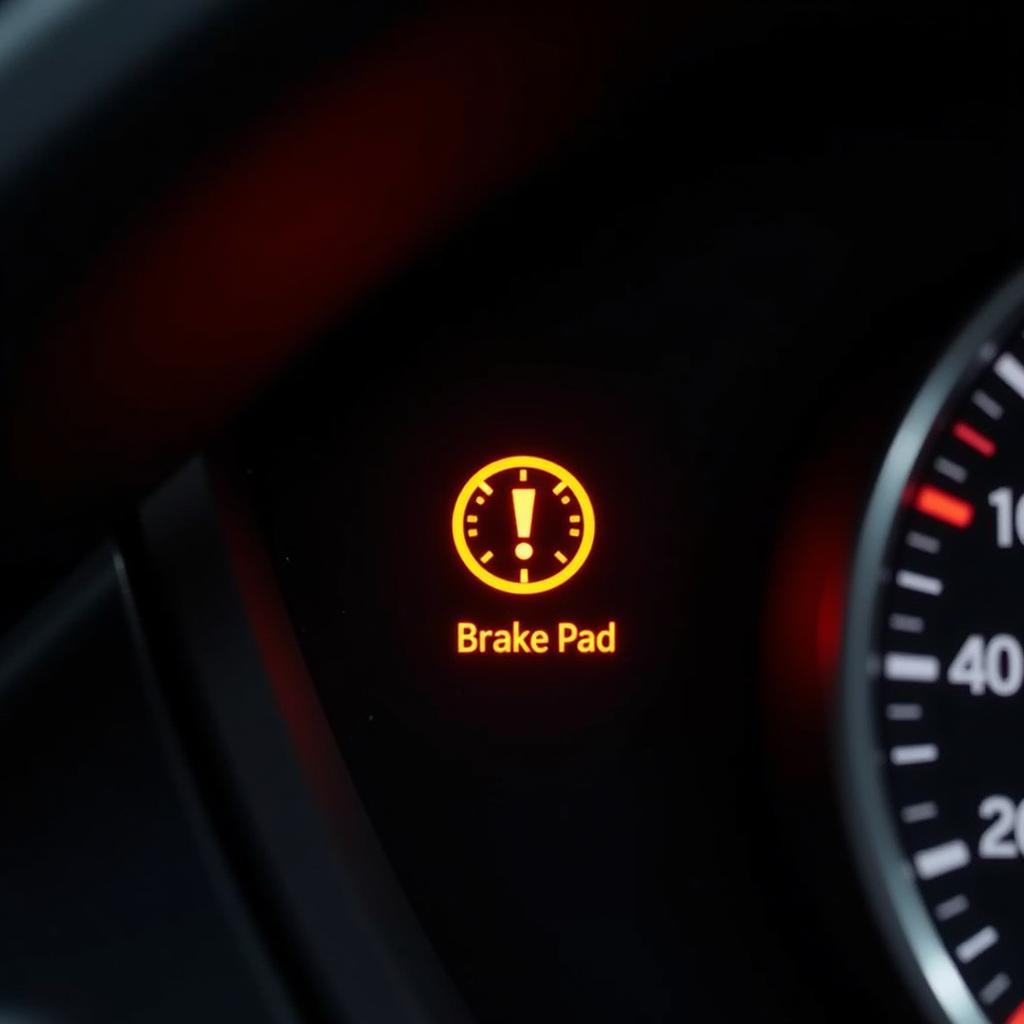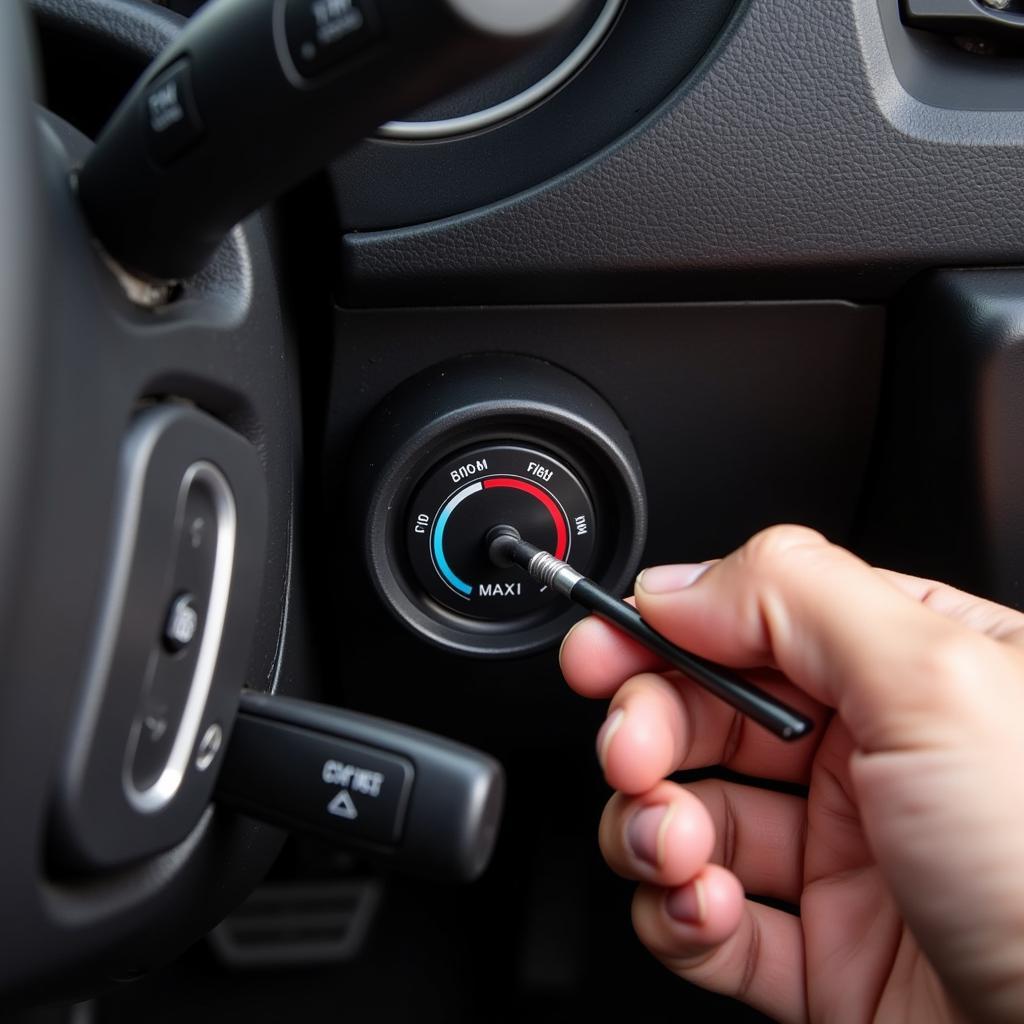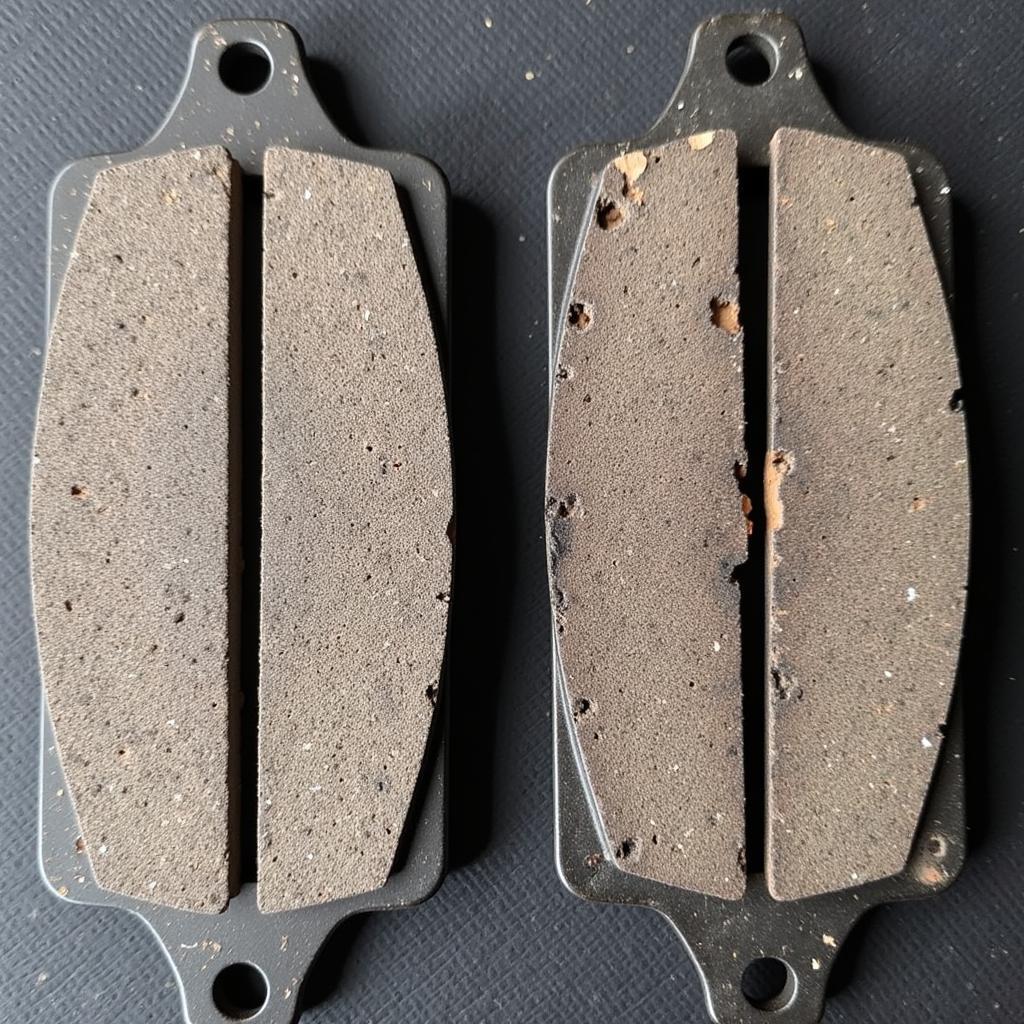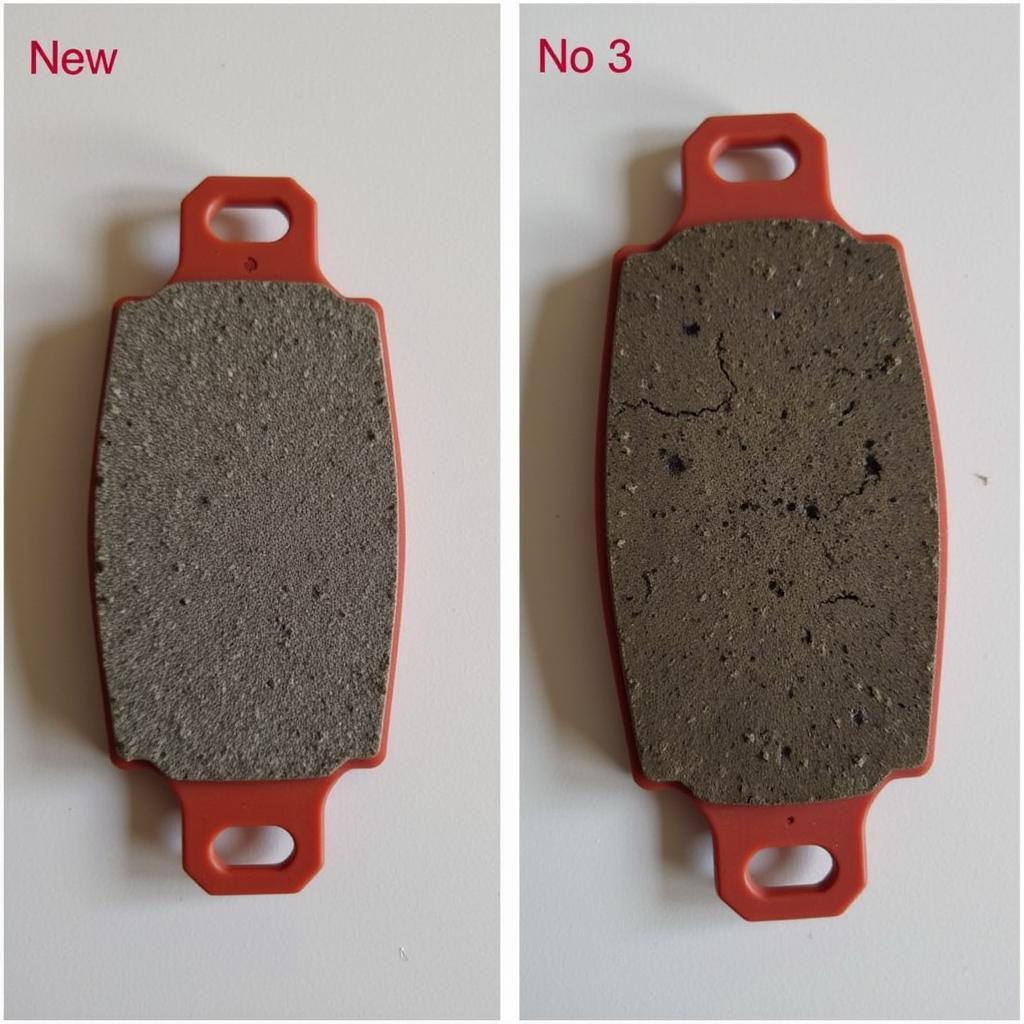If you’re driving your Audi A1 and the brake pad warning light pops up on your dashboard, it’s crucial not to ignore it. This amber or red light, often shaped like a circle with dashed lines around it and an exclamation point in the center, is your car’s way of telling you there’s an issue with the braking system that requires attention. While it might seem alarming, understanding what triggers this warning and the appropriate course of action can save you from potential headaches and ensure your safety on the road.
Decoding the Audi A1 Brake Pad Warning Light
The most common reason for the brake pad warning light to illuminate is worn-down brake pads. Brake pads are essential components of your car’s braking system, designed to grip the brake rotors and slow down or stop the vehicle. Over time, these pads wear down due to friction, and when they reach a certain thinness, the brake pad wear sensor triggers the warning light.
 Audi A1 dashboard with brake pad warning light illuminated
Audi A1 dashboard with brake pad warning light illuminated
However, there are other potential culprits behind a glowing brake pad warning light:
- Worn brake pad sensor: The sensor itself, usually a small wire embedded in the brake pad material, can become damaged or worn out, triggering a false warning.
- Low brake fluid level: Brake fluid is the lifeblood of your braking system, transmitting the force from your foot on the brake pedal to the wheels. A leak in the system can lead to low fluid levels, compromising braking performance and triggering the warning light.
- Electrical issues: Like any electrical system, the wiring and connections related to your brakes can encounter problems, leading to a faulty signal that illuminates the warning light.
What to Do When Your Audi A1 Brake Pad Warning Light Comes On
Seeing the brake pad warning light doesn’t necessarily mean slamming on the brakes and calling for a tow truck. However, it does warrant immediate attention to ensure your safety and prevent further damage to your Audi A1. Here’s a step-by-step guide on what to do:
-
Assess your braking performance: Carefully test your brakes while driving at a low speed. Do you notice any unusual noises like grinding or squeaking? Does the brake pedal feel spongy or lower than usual? Any noticeable difference in braking performance warrants immediate attention from a qualified mechanic.
-
Check your brake fluid level: If you’re comfortable doing so, safely park your car and inspect the brake fluid reservoir under the hood. The reservoir will have markings indicating the minimum and maximum levels. If the fluid is low, it could indicate a leak, and you should have a mechanic inspect it.
 Person checking the brake fluid level in an Audi A1
Person checking the brake fluid level in an Audi A1
- Don’t delay professional inspection: Even if your brakes seem to be functioning normally and the fluid level is fine, it’s essential to have your car inspected by a qualified mechanic as soon as possible. They have the expertise and tools to diagnose the exact cause of the warning light and perform the necessary repairs.
The Importance of Timely Brake Pad Replacement
“Ignoring the brake pad warning light can be a costly mistake,” warns Tim Miller, a senior automotive technician with over 20 years of experience. “Not only are you risking your safety and the safety of others on the road, but you could also end up damaging other components of your braking system, leading to much more expensive repairs down the line.”
Timely brake pad replacement is vital for maintaining optimal braking performance and safety. Worn brake pads compromise your car’s ability to stop effectively, increasing the stopping distance and the risk of accidents. Moreover, driving with worn pads can damage the brake rotors, leading to costly replacements.
 Comparison of new and worn brake pads for an Audi A1
Comparison of new and worn brake pads for an Audi A1
Audi A1 Brake Pad Warning Light: Your Safety Checklist
- Regular Maintenance: Adhere to your Audi A1’s recommended maintenance schedule, which includes regular brake inspections.
- Don’t Ignore the Warning: Never ignore the brake pad warning light. Have it checked by a qualified mechanic immediately.
- Quality Parts: When replacing brake pads, always opt for high-quality parts that meet the specifications of your Audi A1.
- Professional Installation: While some car enthusiasts may choose to replace brake pads themselves, it’s generally recommended to have them installed by a professional to ensure proper functionality and safety.
Addressing the brake pad warning light promptly ensures a smooth and safe driving experience. Remember, preventative maintenance is always better than dealing with the consequences of ignoring a potential problem.


